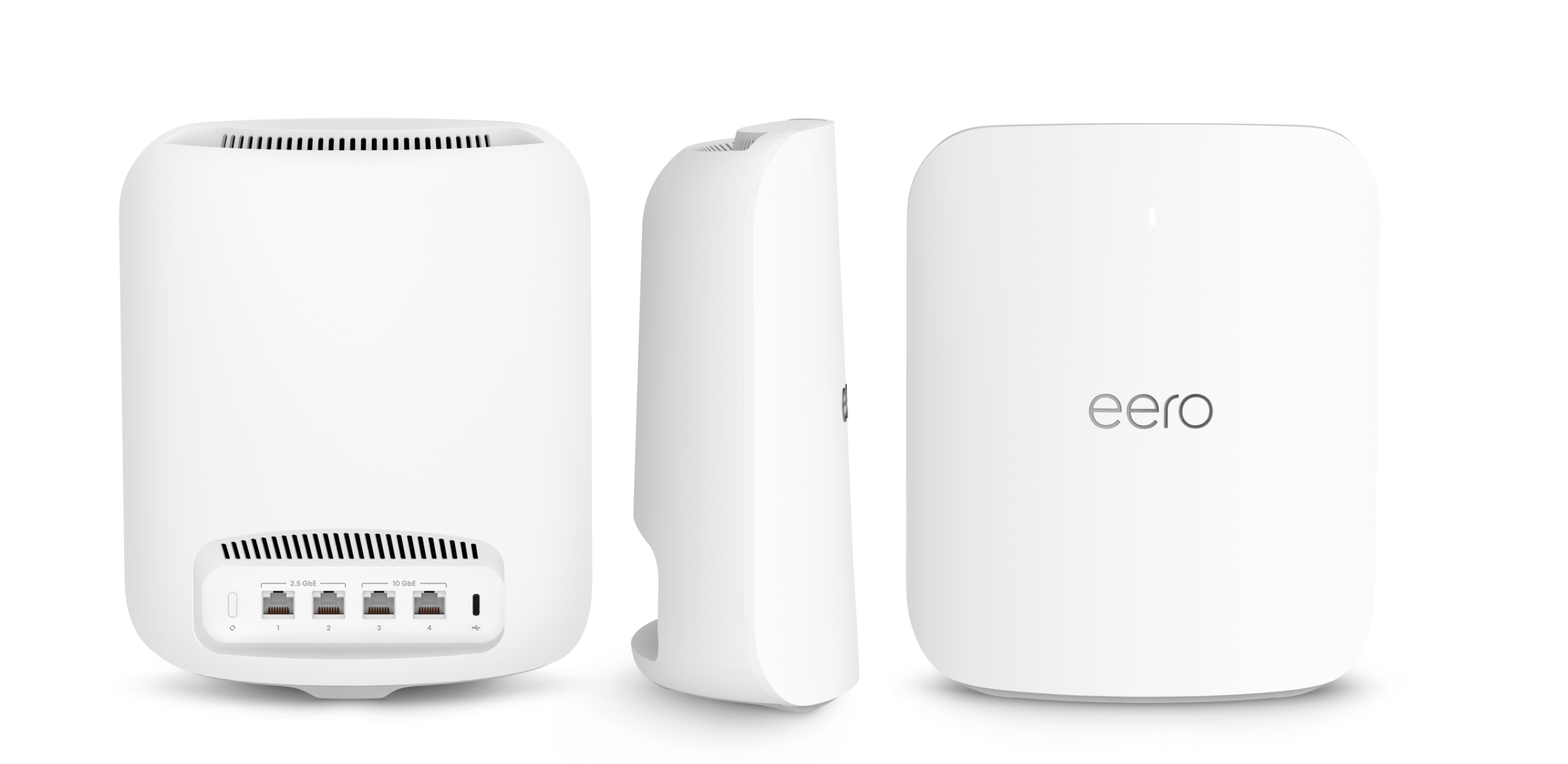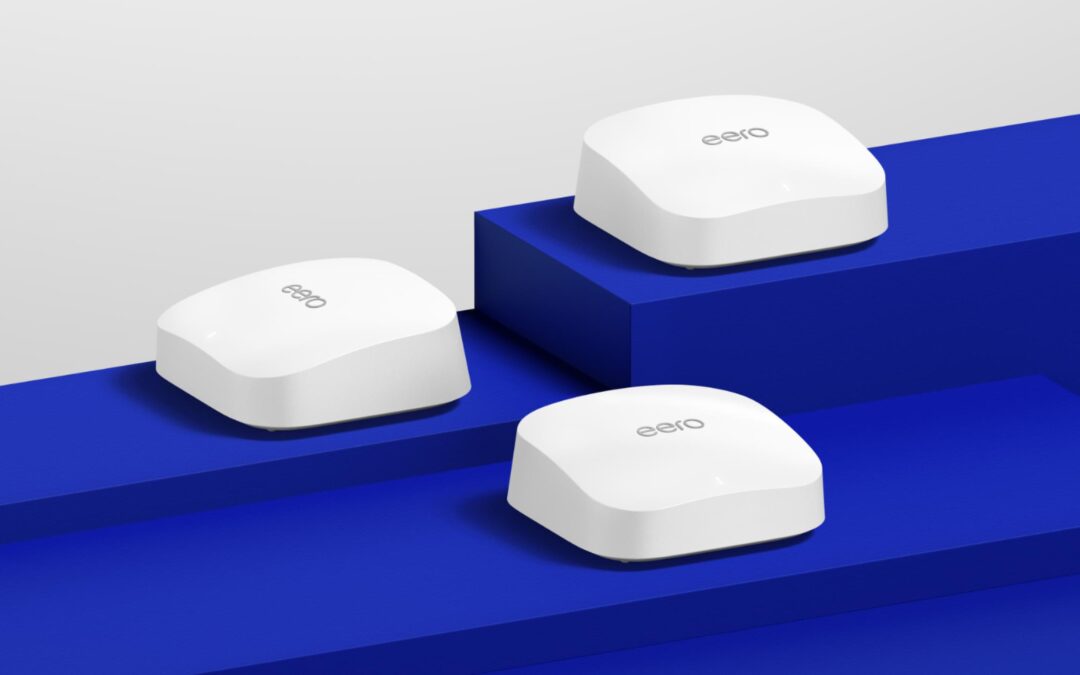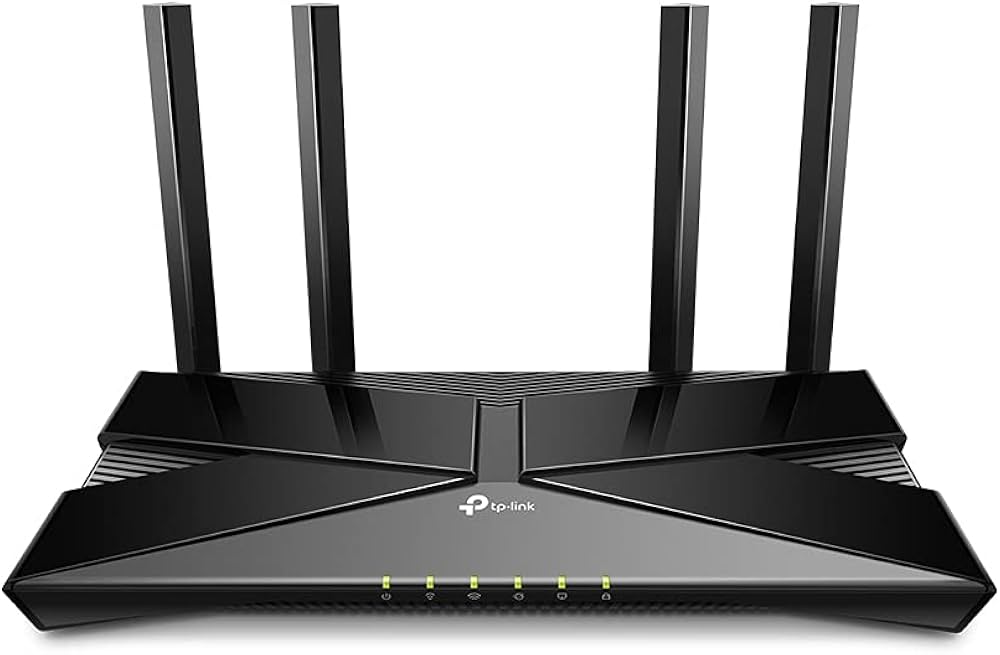Choosing the right Wi-Fi system can feel overwhelming with so many options out there, but two names that consistently stand out are eero and TP-Link. Both brands promise seamless connectivity and reliable performance, but they take different approaches to meet your home networking needs. If you’re trying to decide between them, you’re not alone.
I’ve spent time digging into what makes these systems unique, from their features to their ease of use. Whether you’re after a simple setup, advanced customization, or the best value for your money, understanding how eero and TP-Link stack up can make all the difference. Let’s break it down so you can make the best choice for your home.
Overview Of Eero And TP-Link
Eero and TP-Link are two leading brands in Wi-Fi solutions, known for their diverse product offerings. Both cater to varying tech preferences, providing options for seamless connectivity and enhanced network management.
Brief Introduction To Eero
Eero, owned by Amazon, focuses on simplicity and user-friendly design. Its mesh Wi-Fi systems offer an intuitive setup process via the Eero app. The brand emphasizes smart home integration, leveraging Alexa compatibility to streamline network control. Eero devices, including the Eero Pro 6 and Eero 6+, provide excellent coverage and adaptive routing for consistent performance.
Brief Introduction To TP-Link
TP-Link delivers a broad range of networking products, from traditional routers to advanced mesh systems like the Deco series. Known for affordability and robust customization, its products suit varying budgets and technical proficiencies. TP-Link designs devices, such as the Deco X60 and Archer AX6000, with features like parental controls and QoS (Quality of Service) settings, ensuring versatility and performance across networks.
Design And Build Quality
Eero and TP-Link take different approaches when it comes to design and build quality. While both strive to balance aesthetics and functionality, their priorities vary to cater to diverse user preferences.
Aesthetic Appeal And Size
Eero devices feature a minimalist, modern design with smooth curves and compact dimensions. Models like the Eero Pro 6 measure approximately 5.3 x 5.3 x 1.9 inches, making them unobtrusive and ideal for blending into contemporary home decor. The neutral white finish ensures compatibility with various interior styles.
TP-Link devices, such as the Deco X60, adopt a clean yet slightly bulkier cylindrical design, measuring about 4.33 x 4.33 x 4.49 inches. While compact, these devices are slightly larger than Eero units and focus more on delivering an industrial, robust appearance. Matte finishes and subtle LED indicators enhance their visual appeal without being overly distracting.
Durability And Material Quality
Eero devices use durable plastic enclosures designed to withstand everyday handling while maintaining a lightweight structure. The build quality emphasizes durability without compromising the seamless design.
TP-Link devices feature a similar hard-plastic construction, ensuring long-term reliability. Models like the Archer AX6000 also highlight sturdy builds, suitable for high-performance environments. TP-Link’s designs often include better ventilation for optimal thermal management, reinforcing their reliability in demanding setups.
Performance And Features
Eero and TP-Link prioritize reliable performance and advanced features but differ in how they enhance user experience and connectivity.
Speed And Coverage
Eero mesh systems deliver speeds of up to 1 Gbps in select models like the Eero Pro 6, offering wide coverage up to 6,000 sq. ft. with a three-pack setup. Adaptive routing ensures consistent speed across all connected devices.
TP-Link’s Deco X60 and Archer AX6000 support speeds up to 3 Gbps, catering to demanding tasks like 4K streaming and gaming. With multi-unit setups, TP-Link devices cover larger areas, reaching up to 7,000 sq. ft., offering an advantage in expansive homes.
Stability And Signal Strength
Eero systems rely on TrueMesh technology to minimize interference and provide stable connections in multi-device environments. This ensures smooth streaming and browsing even in congested networks.
TP-Link devices use advanced technologies like Beamforming for focused signals and OFDMA for efficient data handling, boosting stability. These features maintain steady connections in high-traffic households with multiple users and devices.
Smart Features And Integrations
Eero emphasizes integration with Amazon Alexa, providing seamless voice control for network functions. It includes automatic updates, built-in security features, and support for smart home devices, enhancing user convenience.
TP-Link offers robust app-based controls via the Tether and Deco apps. Features like parental controls, Quality of Service (QoS), and compatibility with platforms like Google Assistant and Alexa make TP-Link versatile for tech-savvy users.
Ease Of Setup And Usability
Both eero and TP-Link excel in making their devices user-friendly, but their approaches differ in simplicity and customization options. Here’s a breakdown of their setup process and app usability.

Initial Setup Process
Eero simplifies the setup process with its app-guided configuration. After connecting the primary device to the modem, the Eero app walks through step-by-step instructions with automatic updates and optimization. This process takes 10–15 minutes on average and requires no technical expertise. Devices such as the Eero Pro 6 even auto-detect network issues during setup for smoother activation.
TP-Link offers a slightly more technical setup through its Tether app or web interface. While still straightforward, users often need to select specific network preferences manually, making it more suitable for those comfortable with basic networking terms. Setting up systems like the Deco X60 takes 20–30 minutes but provides more options for advanced customization during installation.
User Interface And App Experience
Eero’s app prioritizes simplicity with its clean interface and minimalistic layout. It allows for device management, network priorities, and guest Wi-Fi creation in just a few taps. The app supports Alexa integration for voice commands, enhancing smart home management. Although limited in granular settings, this design caters to users seeking ease over complexity.
TP-Link’s apps, including Deco and Tether, emphasize functionality with detailed control options. Features like parental controls, QoS settings, and customizable security protocols are more prominent. The interface, while slightly more complex than Eero’s, includes advanced performance metrics and troubleshooting tools for tech-savvy users. Both brands offer responsive updates and reliable remote management capabilities.
Pricing And Value For Money
Comparing eero and TP-Link involves evaluating their pricing structures and determining the value they offer at specific price points. Each brand targets distinct user demographics with differing priorities.
Cost Comparison
Eero mesh systems generally start at $89 for entry-level models like the Eero 6 Lite, with higher-end options such as the Eero Pro 6 priced around $229 per unit or $599 for a three-pack. These prices reflect eero’s focus on simplicity and smart home integration. In contrast, TP-Link offers a wider pricing spectrum, with models starting at $79 for the Deco S4 and going up to $449 for premium options like Deco XE75 or Archer AXE300. TP-Link positions its products as budget-friendly without sacrificing key features, providing more options for varied budgets.
Features Relative To Price
Eero’s price point often covers user-friendly features like automatic updates, TrueMesh technology, and seamless Alexa integration, aligning with its emphasis on convenience. For example, the Eero 6+ includes Wi-Fi 6 and supports gigabit speeds, suitable for homes up to 4,500 sq. ft. However, premium security services through Eero Secure or Secure+ incur additional subscription fees, which could impact its value perception.
TP-Link integrates advanced hardware-focused features, offering similar or greater performance at lower prices compared to Eero. Models like Deco X60 provide Wi-Fi 6, multi-gigabit speeds, and up to 5,000 sq. ft. coverage for $269 in a two-pack. Additionally, TP-Link includes free access to parental controls and QoS in its devices, avoiding ongoing subscription costs. This appeals to users seeking robust specifications at a value-oriented price.
Pros And Cons Of Eero And TP-Link
Both eero and TP-Link offer distinct advantages and potential drawbacks. Understanding these helps in identifying the best fit for specific networking needs.
Key Advantages Of Eero
Eero excels in simplicity and seamless integration. Its app-guided setup is quick, typically requiring 10–15 minutes, making it ideal for non-technical users. Features like TrueMesh technology ensure smooth connectivity by reducing interference, and the adaptive routing delivers consistent performance across devices. Its compatibility with Amazon Alexa enhances smart home functionality, enabling voice control for connected devices.
Eero devices prioritize aesthetics with sleek, minimalistic designs that blend into modern home decor. Models like the Eero Pro 6 provide wide coverage up to 6,000 sq. ft. with a three-pack combo and speeds reaching 1 Gbps. Automatic updates ensure security and long-term reliability, adding convenience without manual intervention.
Key Advantages Of TP-Link
TP-Link offers versatile networking solutions with excellent value across budget ranges. Models like Deco XE75 and Archer AXE300 deliver robust features, supporting speeds up to 3 Gbps and wider coverage of up to 7,000 sq. ft. This makes TP-Link suitable for larger homes or offices. Technologies like Beamforming and OFDMA enhance stability and ensure better signal strength in congested networks.
Customization stands out with TP-Link’s Tether app and web interface, which provide detailed control options, including parental controls and Quality of Service (QoS). This appeals to tech-savvy users seeking tailored performance. TP-Link’s devices use efficient thermal designs to improve durability and reliability, while its pricing strategy offers premium-grade features without mandatory subscriptions, ensuring cost-effectiveness.
Limitations Of Eero And TP-Link
Eero’s simplicity may not satisfy advanced users looking for in-depth customization. Security features like Eero Secure and Eero Secure+ require ongoing subscriptions, increasing long-term costs. Its higher upfront pricing, particularly for models like the Eero Pro 6, might not suit budget-conscious buyers seeking affordable mesh systems.
TP-Link’s setup process is more technical and requires 20–30 minutes, which could be intimidating for beginners. The cylindrical, industrial design of some models like Deco X60 may not suit all aesthetics. While affordable, its software occasionally lacks the polish and intuitiveness of eero’s app, possibly impacting ease of use for basic users.
Conclusion
Choosing between eero and TP-Link ultimately depends on your priorities and technical comfort. Both brands deliver reliable performance, but their strengths cater to different user needs. Whether you value simplicity, smart home integration, or advanced customization, there’s a solution for you. By aligning your preferences with the features offered, you can confidently invest in a Wi-Fi system that enhances your connectivity and fits seamlessly into your lifestyle.
Frequently Asked Questions
What makes Eero a good option for home Wi-Fi?
Eero is ideal for non-technical users, offering a simple setup through the Eero app, smart home integration with Alexa, and excellent coverage using TrueMesh technology. Its sleek design blends into modern homes, and models like Eero Pro 6 provide speeds up to 1 Gbps with coverage up to 6,000 sq. ft.
Why should I consider TP-Link for my Wi-Fi needs?
TP-Link provides excellent value with a wide range of devices catering to various budgets. It offers advanced customization, robust performance, and features like parental controls. Devices like the Deco X60 deliver speeds up to 3 Gbps, covering up to 7,000 sq. ft.
Which brand is easier to set up: Eero or TP-Link?
Eero is simpler to set up, taking only 10–15 minutes with an intuitive app process suited for beginners. TP-Link, while still manageable, takes 20–30 minutes and may require some technical knowledge for advanced customization.
How do Eero and TP-Link compare in terms of coverage?
Eero covers up to 6,000 sq. ft. with a three-pack, while TP-Link’s mesh systems can extend coverage up to 7,000 sq. ft., making TP-Link slightly better for larger spaces.
Are Eero devices better for smart home integration?
Yes, Eero integrates seamlessly with Alexa, making it a great choice if you use Amazon smart home devices. Its focus on simplicity also enhances its appeal for smart home setups.
Does TP-Link offer better value for money than Eero?
Generally, yes. TP-Link offers a wide pricing range with robust features at lower costs, appealing to budget-conscious users. However, Eero justifies its higher price with user-friendly features and smart integrations.
Do either of the brands require subscriptions for added features?
Eero offers premium security and parental controls through optional subscription services, while TP-Link provides similar features built into the device without additional costs.
Which brand should tech-savvy users choose?
Tech-savvy users may prefer TP-Link due to its advanced customization options, detailed control settings, and powerful performance features.
How do the designs of Eero and TP-Link devices differ?
Eero devices have a minimalist, modern design that blends into home aesthetics. TP-Link devices tend to be bulkier with a more industrial look, but they often include better ventilation for durability.
Which is better for larger households: Eero or TP-Link?
For larger households, TP-Link may be better due to its broader coverage, faster speeds, and advanced technologies like Beamforming and OFDMA for enhanced stability.


